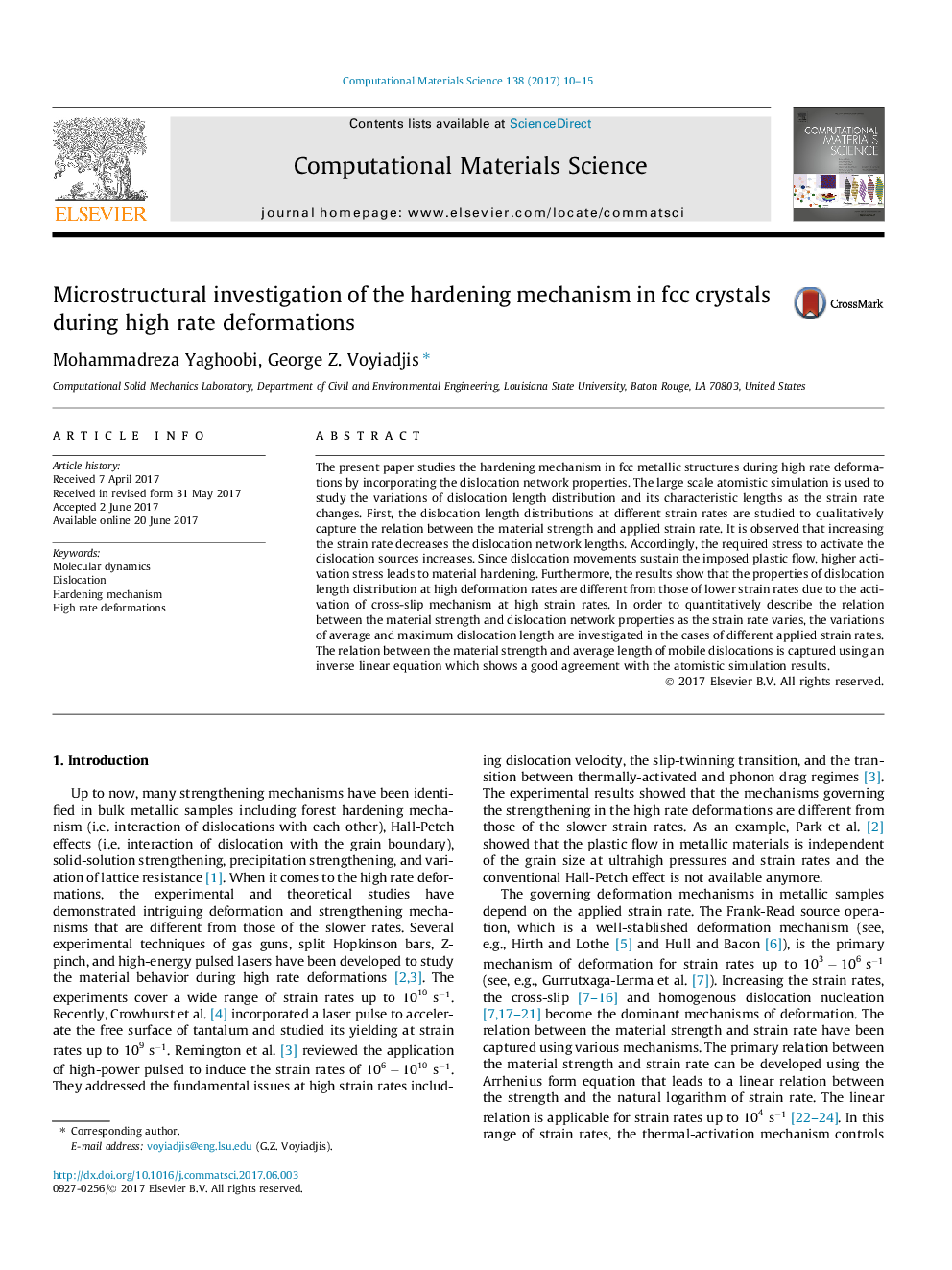| Article ID | Journal | Published Year | Pages | File Type |
|---|---|---|---|---|
| 5453125 | Computational Materials Science | 2017 | 6 Pages |
The present paper studies the hardening mechanism in fcc metallic structures during high rate deformations by incorporating the dislocation network properties. The large scale atomistic simulation is used to study the variations of dislocation length distribution and its characteristic lengths as the strain rate changes. First, the dislocation length distributions at different strain rates are studied to qualitatively capture the relation between the material strength and applied strain rate. It is observed that increasing the strain rate decreases the dislocation network lengths. Accordingly, the required stress to activate the dislocation sources increases. Since dislocation movements sustain the imposed plastic flow, higher activation stress leads to material hardening. Furthermore, the results show that the properties of dislocation length distribution at high deformation rates are different from those of lower strain rates due to the activation of cross-slip mechanism at high strain rates. In order to quantitatively describe the relation between the material strength and dislocation network properties as the strain rate varies, the variations of average and maximum dislocation length are investigated in the cases of different applied strain rates. The relation between the material strength and average length of mobile dislocations is captured using an inverse linear equation which shows a good agreement with the atomistic simulation results.
Graphical abstractDownload high-res image (215KB)Download full-size image
